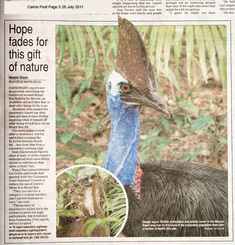 Cairns Post July 28
Cairns Post July 28 The bird is believed to have been very badly injured as it was struck hard by the vehicle and was seen fleeing awkwardly toward the rainforest gully. It hasn't been seen since despite a search of the creek area by a crew of Queensland Parks and Wildlife (QPWS) rangers.
The approximately 18 month old bird is known in the neighbourhbood as 'Bernie' and was attempting to cross the Bingil Bay Road at a known Cassowary crossing area just north of a Council reserve at the junction of two permanent running creeks.
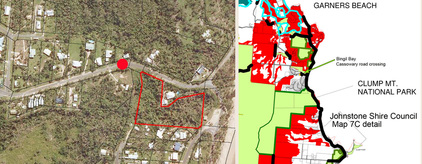
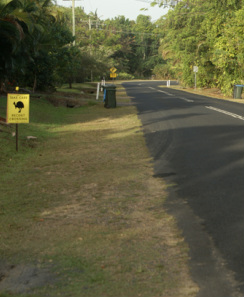
You often see QPWS 'recent crossing' warning signs placed here.
In the weeks following the cyclone it was wonderful to see and hear reports from across the cyclone affected area that most of the known birds had survived. The first one to appear in this part of Bingil Bay was 'Joov' on 11 February.
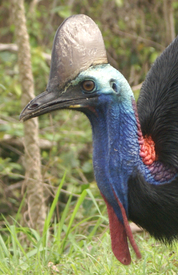 Joov
Joov We thought we would see him with chicks in due time but a few weeks later he turned up alone. He then moved over to the other side of Bingil Bay Road and was seen with 'Barbara' during the the same mating season and again in 2010. He is currently seen with Barbara around Plantation Drive where there is a feeding station and the mating season is now in full swing.
This is his third mating season and although seen briefly with young stripies last year, he hasn't yet successfuly raised a chick. Whenever I see 'Joov', he will have crossed Bingil Bay Road to get here, and I've seen him several times crossing at the very place Bernie was hit.
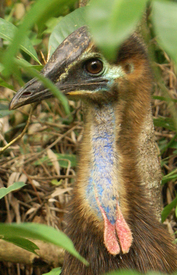 Bernie
Bernie 'Bernie' appeared two days after Joov on the 13th Feb. I first saw him back in August 2010. He was a very shy young chick, still whistling occassionally for his dad, and moved from shadow to shadow in the dappled light of the rainforest hurredly foraging and looking for a territory of his own.
A year later he had managed to establish a place for himself and seemed confident in his surrounds. We were delighted to see he had survived the night of the cyclone that left his habitat in shreds. He crossed the Bingil Bay Road regularly.
The news of his accident is very sad and we hope we will see him again.
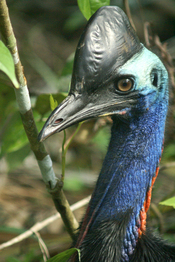 Blackie
Blackie 'Blackie' turned up on April 21st. A young adult named because of it's dark appearance. It doesn't have any light markings forward of its eye. This bird spends a lot of time here now. I suspect this bird is close to it's first mating season and is a female. She is persevering with establishing this as part of her patch. I am not sure if she is accessing a feeding station but as with all the birds I see, she is healthy and her scats, although quite small, appear to be full of native fruits.
She balances her time between the visits of Joov and Ms Cass.
Several birds can access the same area foraging en route from one gully to another and mostly avoiding contact with each other.
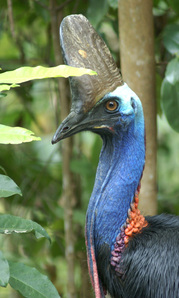 Ms Cass
Ms Cass There was a lot of crashing and honking noises in the gully yesterday as 'Ms Cass' encountered 'Blackie'. She then stayed for hours just standing around at different spots letting 'Blackie' know who is boss.
She is known to Bingil Bay residents near Bicton Hill to the south and on the northern side of Bingil Bay Road. There have been times when locals waved traffic to slow down and let her cross the road during busy hours when workers are travelling to and from work.
It is tragic that these magnificent prehistoric creatures can survive a category five cyclone but they can't survive the threats we are directly responsible for. There has been 10 Cassowary deaths since Cyclone Yasi, most of those due to road death or dog attack.
There is a petition at the Bingil Bay Cafe asking Council to lower the speed limit. The sad thing is that it was started because the local community feared Bernie was at risk crossing the road.
If you would like to help please email Cassowary Coast Regional Council asking for the speed limit to be reduced and speed calming devices to be installed at the Bingil Bay Village.
Please enjoy the photos I took as I was privileged and delighted to follow Bernie's progress, hoping to see him mature to adulthood.
Liz


